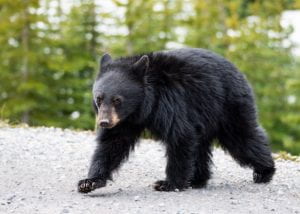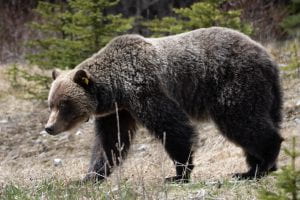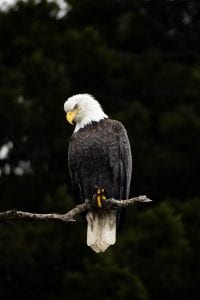Wow the school year is halfway done, I’m in disbelief. I feel like we just started the first semester. Since we are halfway done our semester we have a classic PLP event, the MPOL (Mid Year Presentation of Learning). Since this is my seventh or eighth POL (presentation of learning), Im not going to explain it, but you can go read one of my previous posts where I explain it in depth here.
Manhattan Project Speech
Intro: Why are we so destructive. From the time we can walk, we our knocking toys down, and p over. Throughout history people have spent huge amounts of resources in order to destroy each other’s villages, towns, and cities. As our societies evolved so did our ability to destroy. Fire became gunpowder, then dynamite, then firebombs. Finally we came up with the ultimate destructive power, the atomic bomb. While it destroyed ended the lives of tens of thousands of people, and flattened cities, why should we care?
Intro Alt: Destruction, it created the world we live in today. Rich forests, cut down to build our towns and cities. Lush meadows plowed to create farmland to feed us. Wild rivers, dammed to power and irrigate our cities. Every amenity we take for granted today required something to be destroyed to make it. But at what point does this destruction become to much. I think we can all agree we need to cut some forests down to build our houses, or convert some of our coast into ports and industrial zones. But how about when we have to destroy these same amenities of others, even cause them suffering. How about when it requires killing them. How about 150,000. This was the price we paid to end the Second World War. The destruction of two entire cities, full of innocent people. There were children
Body:
Evidence 1: The explosions of the atomic bomb were not the only important part. The invention and construction of these bombs were incredibly taxing economically, environmentally, and socially. The extraction of uranium is incredibly destructive both to our health and the environment. Uranium is both radioactive as well as chemically toxic. Mining it often leads to contaminated water sources which can ruin ecosystems as well as our health. So why do we use such a powerful resource, which can take such a toll on the environment to extract, just to destroy each other?
Evidence 2: There is no better example of our destructive capabilities as humans then the bombings of Hiroshima and Nagasaki. These bombings are incredibly significant in our history. They killed well over 100,000 people, Brought and end to WWII, and changed the future of warfare. These bombings were more complicated then being good or bad. Did the positives outweigh the Negatives? What even are the positives and negatives? These are all questions we must ask ourselves when were considering the implications of Nuclear Weapons in warfare.
Evidence 3: Nuclear Weapons undoubtedly changed warfare forever. In the last 75 years there has not been a single large scale conflict between major powers. While this seems like a good thing, we need to consider why is this? Could the destruction of an eventual conflict between these two powers destroy our whole planet?
Conclusion: So why is the manhattan project important. I think it is because it is the perfect representation of our destructive nature and capabilities. It was. a project with the sole intent of developing a bomb capable of killing millions. Is the potential destruction of us as a species worth the peace we’ve had in recent years? This is why we need to care, so we can answer questions like these, and hopefully use the positive technologies developed by the manhattan project, and leave the destructive ones in the past.
This has been a strange year, at least in terms of PLP. This is the least amount of PLP courses I have ever taken. When I look back at the year I feel like we haven’t done that much yet, even though we have done quite a bit. I think its because of PLP’s slower progression compared to my other academic courses. Even thought there is a logical reason as to why there has been slow progression in this course, I still feel like I FAILed. Also going through my assignments I don’t have very much media I can include in this post. Most of our projects were in person presentations, these styles of assignments don’t leave me much evidence of my work.
Now I didn’t truly fail at people however I don’t think I worked up to my full potential either. Ive missed a bunch of my last two projects to factors I have no control over. I dont think my Macbeth project was anywhere near as good as it should have been. I think I need to prove my strengths in our current Cold War project but at the moment I’m a bit behind in that project as well. Over the next 5 weeks of this term I need to pull together this Cold War Project into something I’m truly proud of, something which showcases my strengths and potential as a learner.
My greatest accomplishments since the last POL weren’t in PLP courses. Many of my other accomplishments, helped me develop skills which I can use in this course.
My first accomplishment was my completion and high mark (at least for me) in chemistry and precalc.
I spent a lot of time working on these two courses in the last semester. They were two of the most challenging, and complicated courses I have ever taken. While they taught me how to calculate the zero of a parabola, or analyze the bond structure of an organic molecule, the most valuable thing they taught me were study habits. During the busiest weeks, I was spending around 4 hours a night on just those two courses. Spending all this time studying really helped me figure out some study routines, and methods which work for me. This semester I’m going to try to use them while working on PLP assignments.
I have begun to realize that many commonly suggested methods of study don’t work well for me. I’ve heard so many people suggest that you should take frequent breaks while studying. This doesn’t work for me. In order to effectively complete work I need to get on a roll, in general that means a 1-2 hour period with no breaks and then an extended break. This gets a lot easier If I’m interested in the subject. Sometimes I can work for 3-4 hours straight on subjects Im super interested in them. I also need to work while its quiet. I can’t effectively compete work while theres people coming and going from my house, or talking even in another room. My least efficient work times are at school though. I can’t focus on most assignments at school, particularly assignments which require a lot of thinking. One other little study method for me is to work in cold environments. Kind of random but it actually helps me a lot.
In order to apply these methods to PLP, I am going to have to adapt them. The most important factors are focusing on making my topics interesting, making sure I can work in a flow state while doing my work, and starting my work after exercising and eating. Over the next semester I will be dedicating 1-2 hours later in the evening to just PLP work a few times a week. The best times to do this work will either be in the evenings when my brother is at volleyball, or later in the night (after 9pm). At both of these times the house is very quiet and I can easily get homework done without interruption.
Another one of my accomplishments was my drastic improvements and dedication to my wildlife photography. If you’ve been following this blog you know I’m super into wildlife photography, last spring I did a podcast on it for a project (go check out the post here). Since then I would say I have improved a ton. I’ve spent hours talking to pros, and other amateurs about all sorts of topics. I have learned so much, and have been able to utilize that learning to improve my work in so many ways. The dedication, learning, and perseverance I have learned in the last few months could really benefit me in PLP.
Above you can see my images from spring last year, and below our my images from this winter. You can see the technical and compositional improvement between the two sliders.
Now obviously I’m not going to be mentally capable of treating school the same way I treat wildlife photography. The only reason I can spend so long, in brutal weather conditions shooting animals (with my camera), is because I’m truly passionate about it. I wont be able to spark the same passion for PLP. I do think I can trick myself into being passionate about certain projects by incorporating these topics I am passionate about, such as conservation, ecology, and animal behaviour into my projects in some way or another. I am currently doing that in my coldest war project. It’s not sparking my passion the same way the podcast did though. My podcast was the work I was most proud of, and that’s because I actually cared about. Now obviously I care about all my schoolwork, but I don’t necessarily care about the content, I just care about completing it to a certain standard. With the podcast I actually wanted people to hear it, Ive even considered continuing it for a second season, or revamping it. I need to find that passion in more projects this year.
Another goal for the last half of the year is to improve my blog. I want to make this a place I can use as a portfolio when applying for university. In order to improve this I will need to work on the main format of my page, as well as going back and recategorizing old posts. I will try and record more media when
My main goal for the next semester is to be more invested in my work. I want to be creating assignments I am proud of, assignments I want to share with the world. This will require me to be more efficient with my time and find ways to keep myself involved in my work even when I’m not super interested.



























